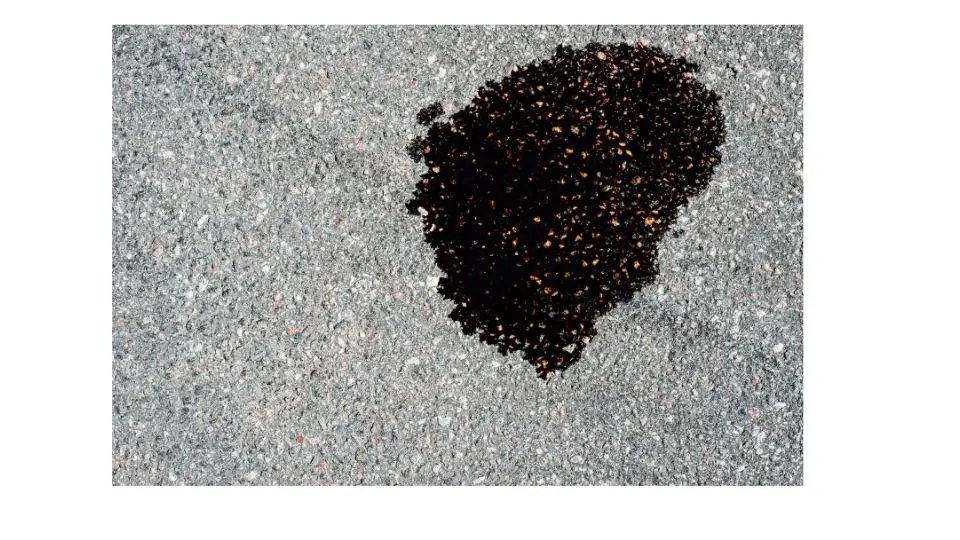In this article, we are going to be addressing a Chevy Cruze oil leak on the passenger side. We will be looking at the causes and the course of action for fixing this particular problem so stick around.
When it comes to your Chevy Cruze or any vehicle with an engine, oil leaks are bound to happen at one point or another. Oil leaks range all the way from minor to catastrophic and should never be ignored.
Why is my Chevy Cruze leaking oil passenger side?
In short, The leading cause of an oil leak on the passenger side of a Chevy Cruze is a leak in the oil pan or a fault with the valve cover gaskets. Another cause could also be a crack in the valve cover itself. This needs to be carefully inspected when troubleshooting and repairing.
As I have already stated oil leaks should never be ignored regardless of severity. When you spot one, it is a sure sign that something is wrong somewhere in the engine and needs to be attended to without delay.
Oil leaks can happen in different parts of the engine and where the leak shows up can help us establish where exactly the problem is emanating from.
When you see a leak on the passenger side, in particular, you can almost be certain that the problem is being caused by the oil pan or valve cover, or valve cover gasket. The oil pan has been known to leak from time to time in Chevy Cruzes.
It can get punctured and start to leak and since it is located more to the right-hand side of the vehicle, the leak will show up on the passenger side. If the leak is coming from further up though, the most likely culprit is the valve cover gasket.
The high temperatures in an engine will cause the gasket to degrade over time leading to oil leaks. Let’s talk about how to spot an engine leak and how to trace its origins.
How Do You Diagnose Where an Oil Leak is Coming From on a Chevy Cruze?
Diagnosing an oil leak will not always be a seamless process and as easy as seeing which side of the car leaks oil. If, for example, a vehicle has a cover underneath, the oil may travel over that cover until it finds a way out.
You need to make sure that this is not the case hence the need to carry out a proper diagnosis. If your Cruze has a protective shield underneath, begin by removing that. Start off with a visual inspection of your engine.
Diagnosing From The Top
Begin from the top of the engine due to the simple fact that oil flows from the top of the engine to the bottom. To establish the actual source of the leak, you need to take this approach. Naturally, the first place to start is the valve cover. Look around it to see if there are any signs of leaks.
Before doing physical inspection though, make sure that the engine has had sufficient time to cool off. When you do a visual inspection, you are looking for any sign of wetness or gunk around the engine.
Gunk is often an indicator that the problem has been happening for a long time. If you see any signs of leaks around the valve cover, it may indicate that the problem is with the gasket.
As stated above, they may succumb to heat over time and begin to leak. Work your way down throughout the whole engine to establish whether there are any more leaks. You may have more than one leak to deal with.
Diagnosing From the Bottom (A lot more difficult)
If you’ve carried out the steps above without any luck, you will need to diagnose the leak from the bottom. After removing any cover, place cardboard under your car overnight.
In the morning, look at the places on the cardboard where there are oil leaks. This will help you zero in on the actual problem spot. Sometimes it’s pretty easy to spot where the leak is especially if large amounts of oil are leaking.
How do you establish the actual source of the leak when it’s not so obvious? Let’s talk about that next.
Use Ultra Violet Dye
One of the best methods involves using ultraviolet dye and a special UV light wand. First of all, pour the dye into your engine. Idle the car for a while and take it for a drive.
Come back then use the want to check around different parts of the engine. When you see glowing spots whenever you shine the UV light on it, that is where the leak is.
Make sure to conduct a thorough investigation in case there might be more than one leak. Proceed to fix the affected area. When you use this method, also make sure to start from the top and work your way to the bottom.
Powder or Powder Spray
The other method you can implement is powder or powder spray. This method works in smaller areas at a time and where you have a rough idea of where the leak is but would want to make sure.
Start by cleaning the suspected area with soap, water, and engine degreaser. Next, apply powder to these areas. Idle the car or take it for a spin.
If you are going to drive it, you need to make sure that it is not in wet or muddy conditions. This may contaminate the powder leading to the wrong diagnosis. Open the hood and look at the area where you applied the powder. If the powder mixes with oil on any part, then you have found the source of your leak.
Conclusion on Chevy Cruze oil leak passenger side
So there you have it. The main causes of an oil leak on the passenger side of Chevy Cruze are an oil pan leak or the valve cover gasket. It has to be noted that, in the case of a valve cover, the valve cover itself could be faulty. Inspect the valve cover for any hairline cracks before replacing the gasket.

Tomas is a retired Chevy Auto Technician that brings decades of hands-on experience and expertise to the table. He’s also a father to two incredible daughters. He enjoys using his knowledge and experience to help you solve and find reliable information on Chevrolet vehicles. Whether it’s troubleshooting engine problems or providing tips for maintenance, Thomas is committed to helping Chevy owners keep their vehicles running smoothly and safely.



